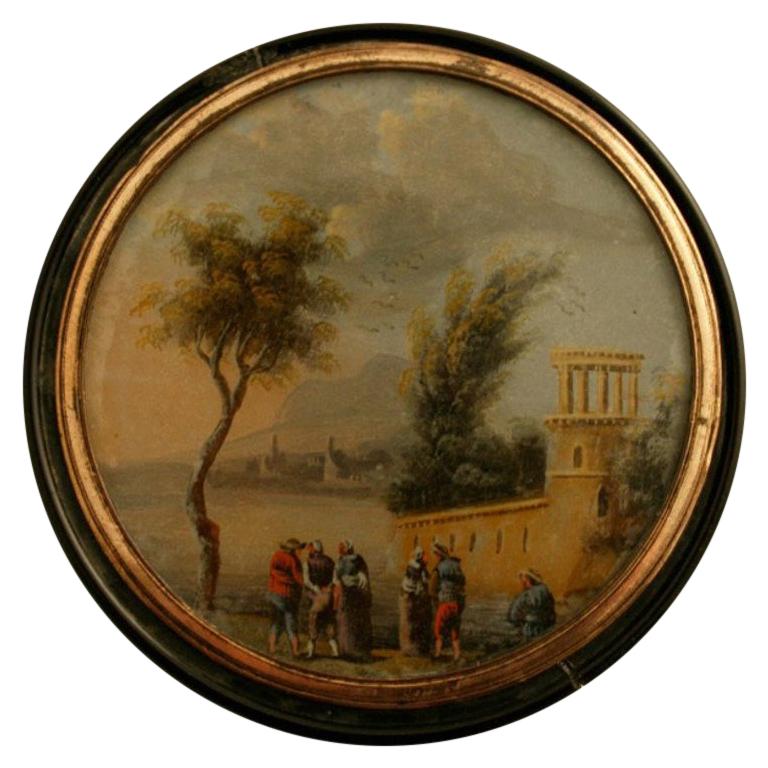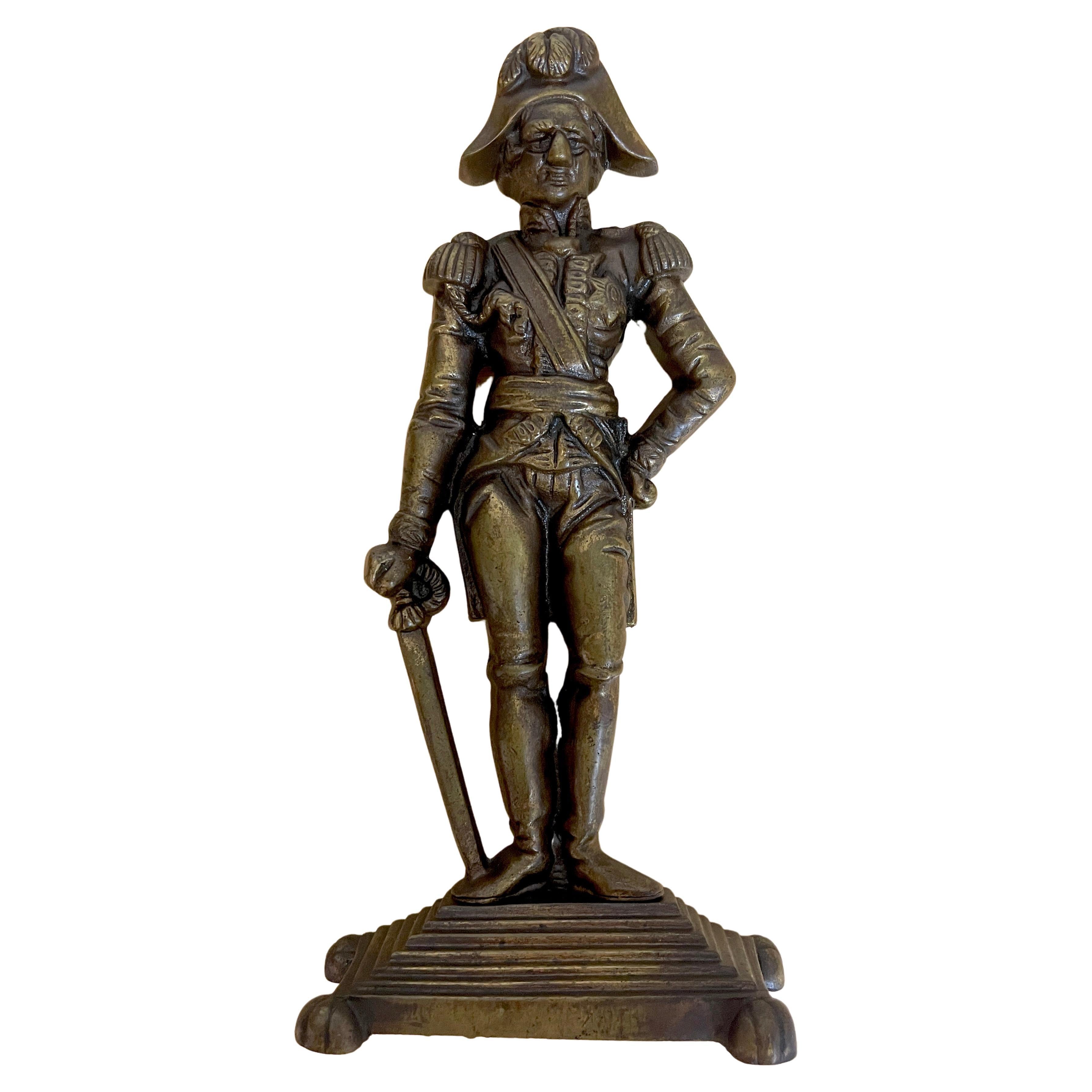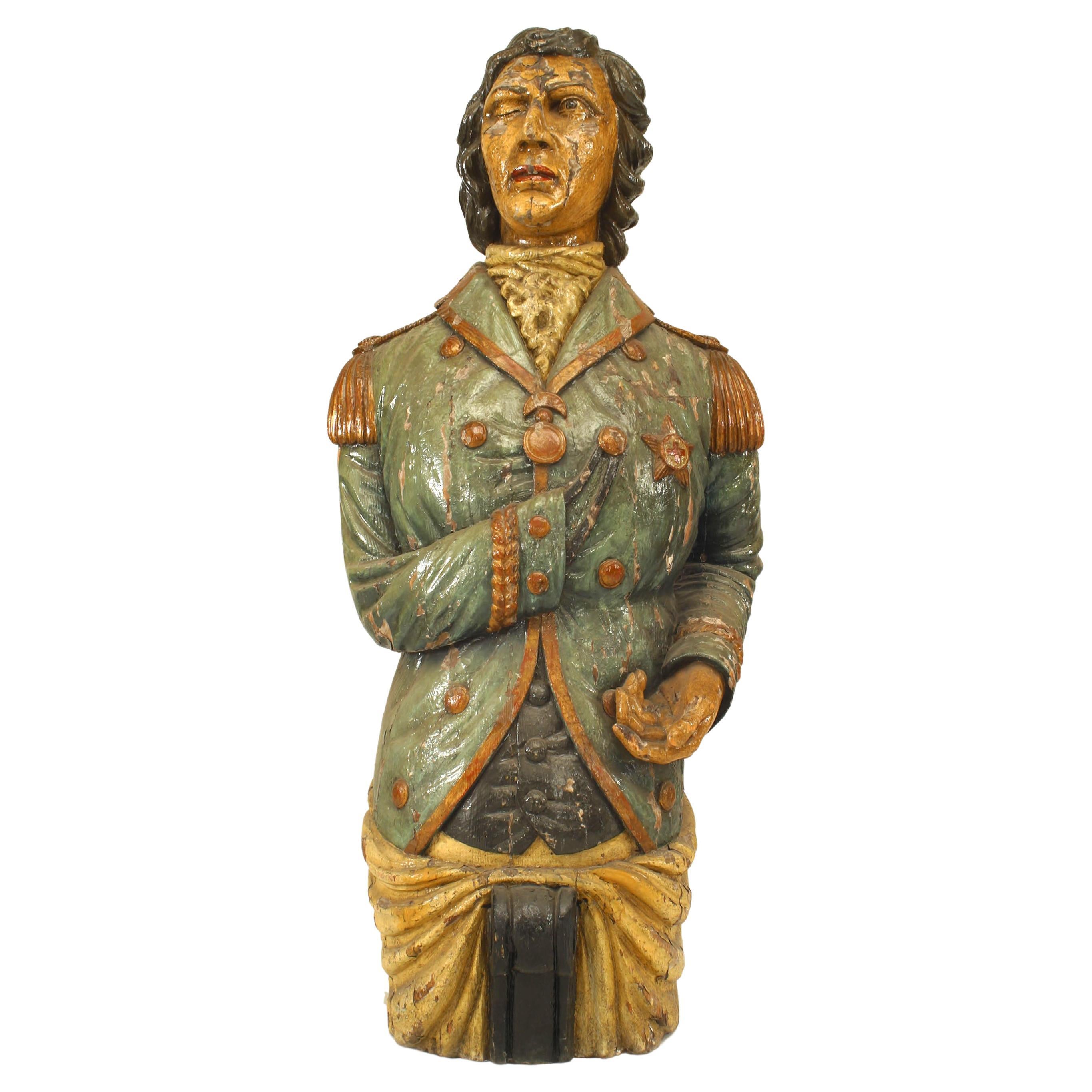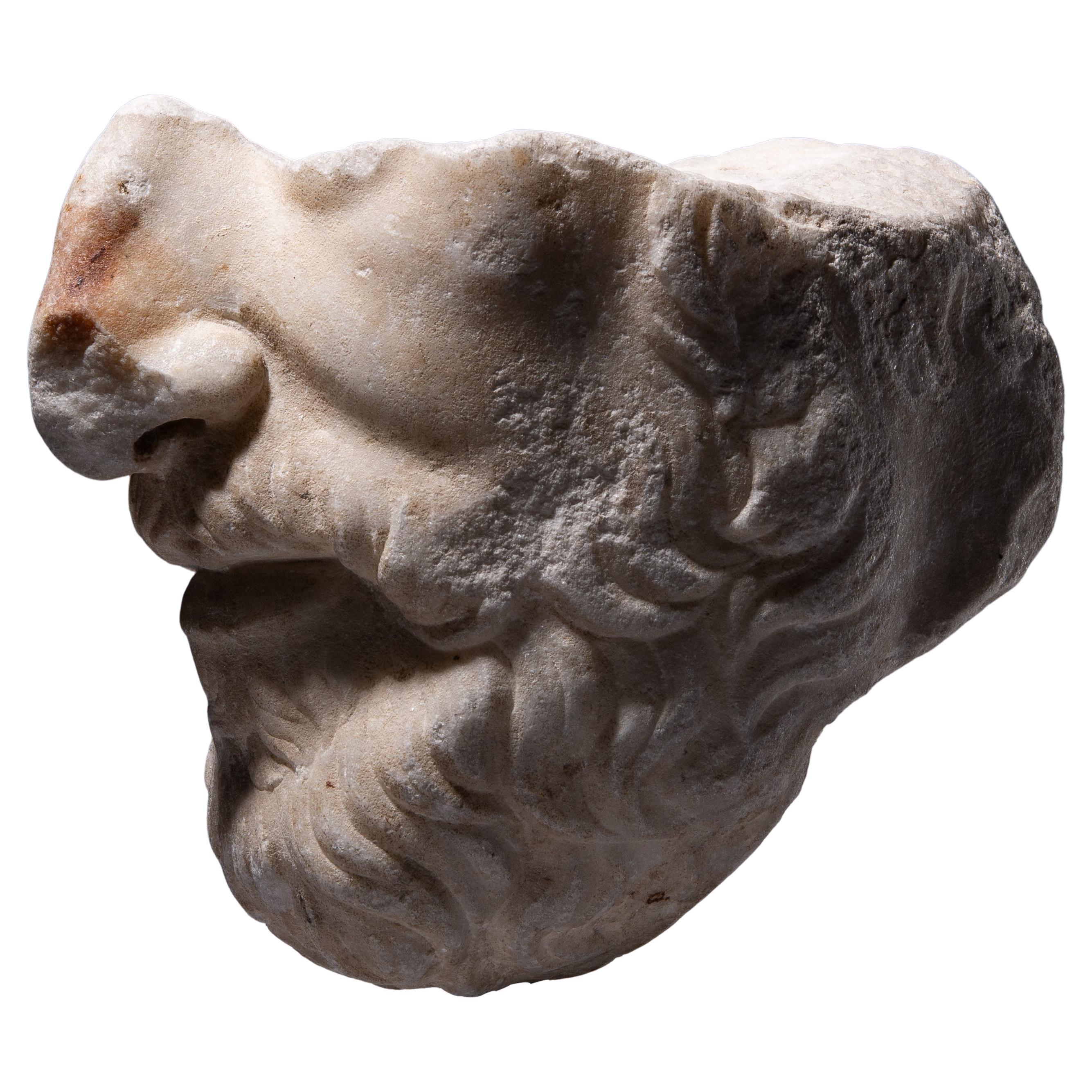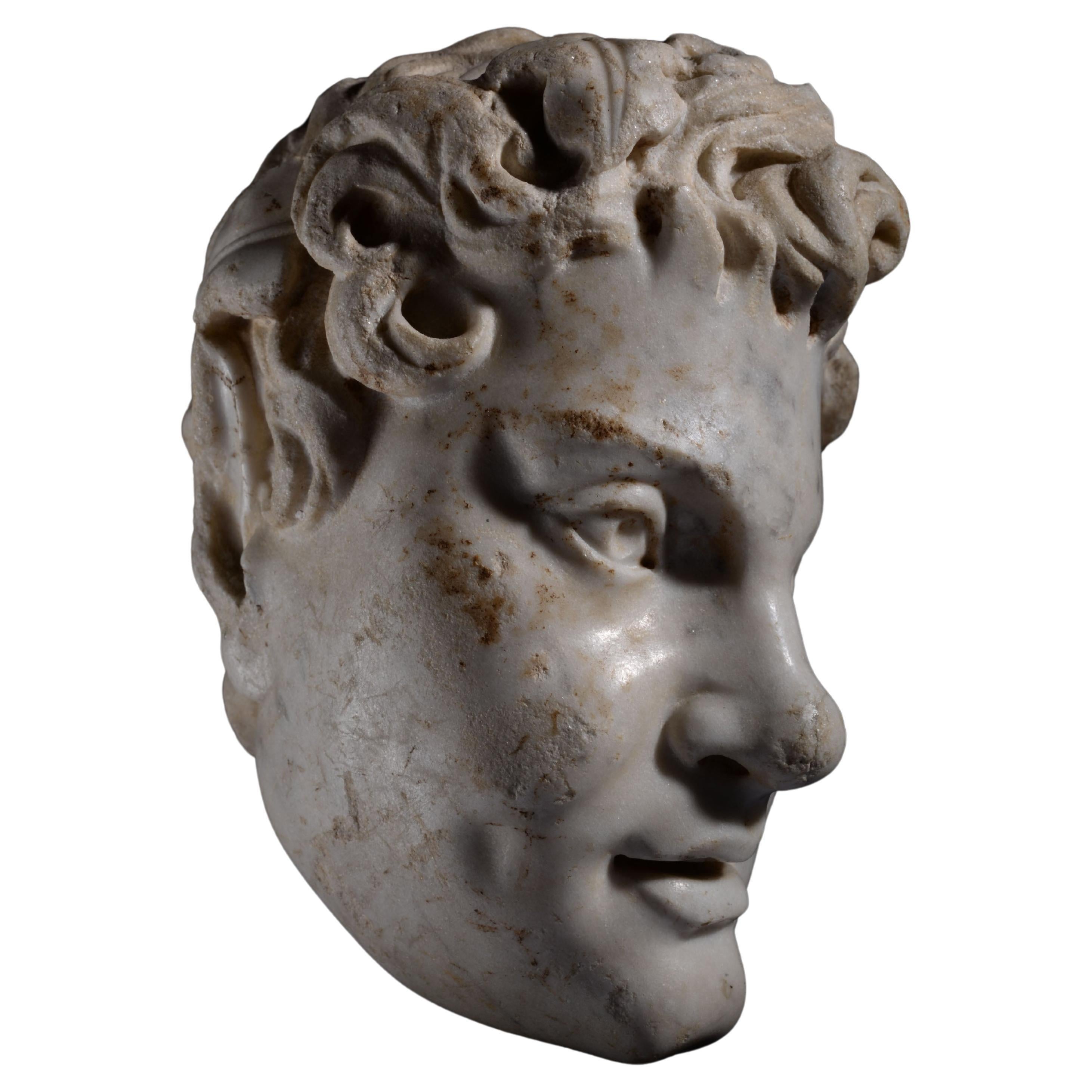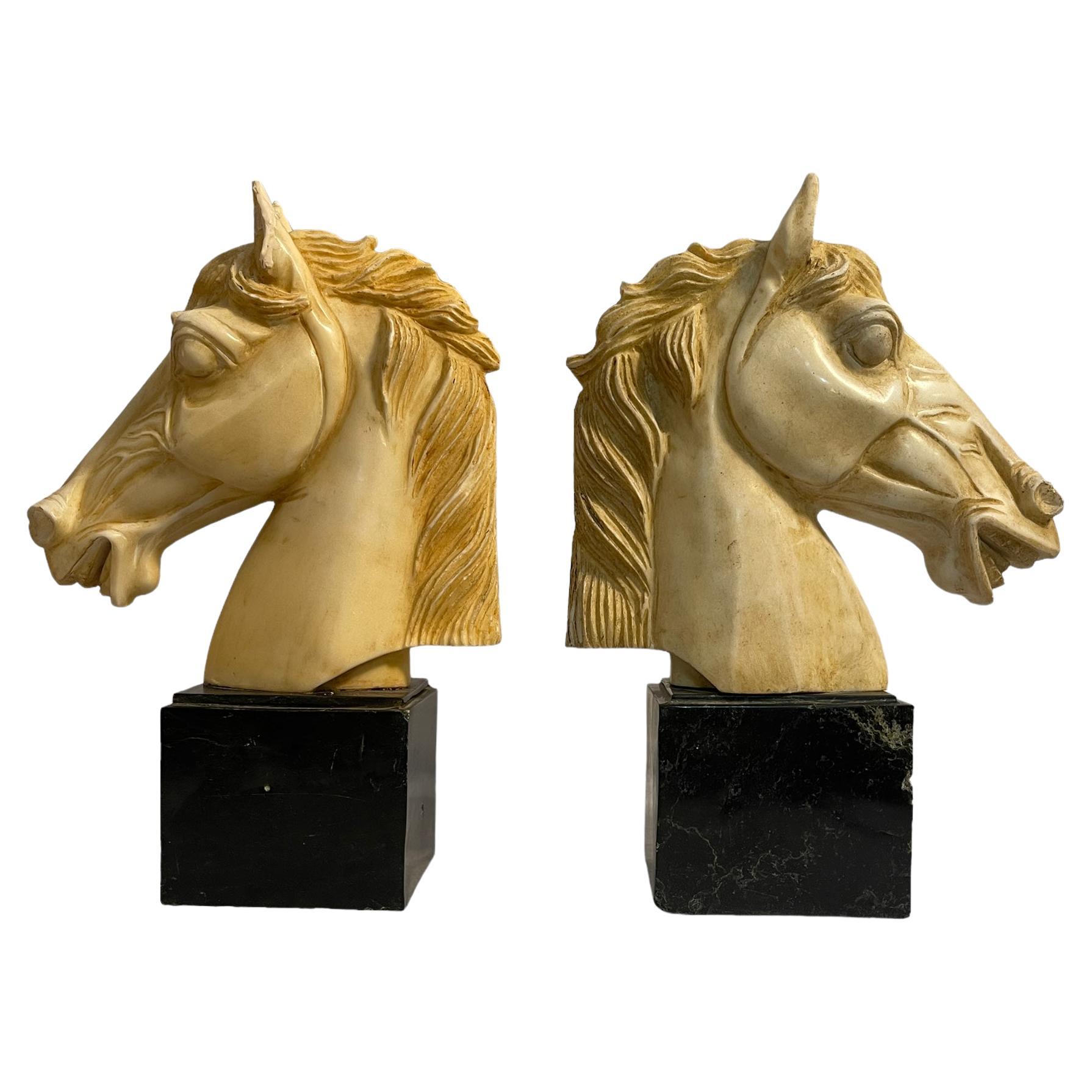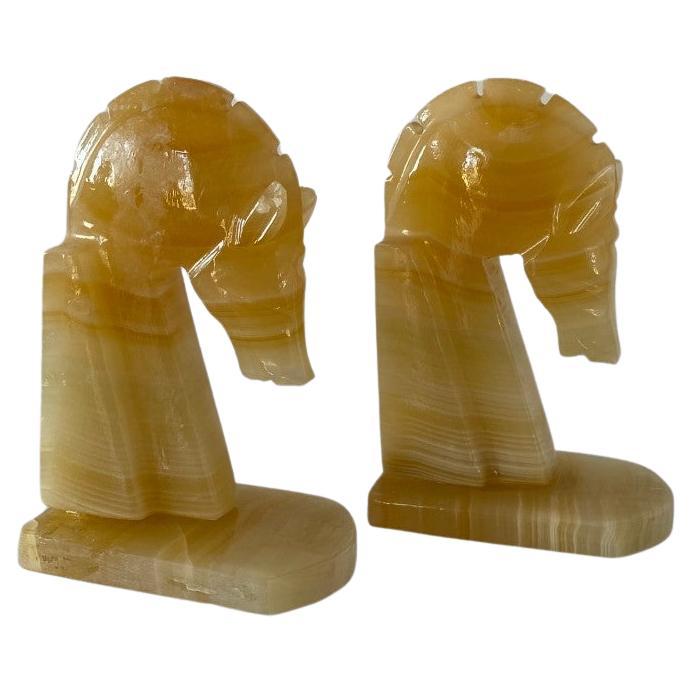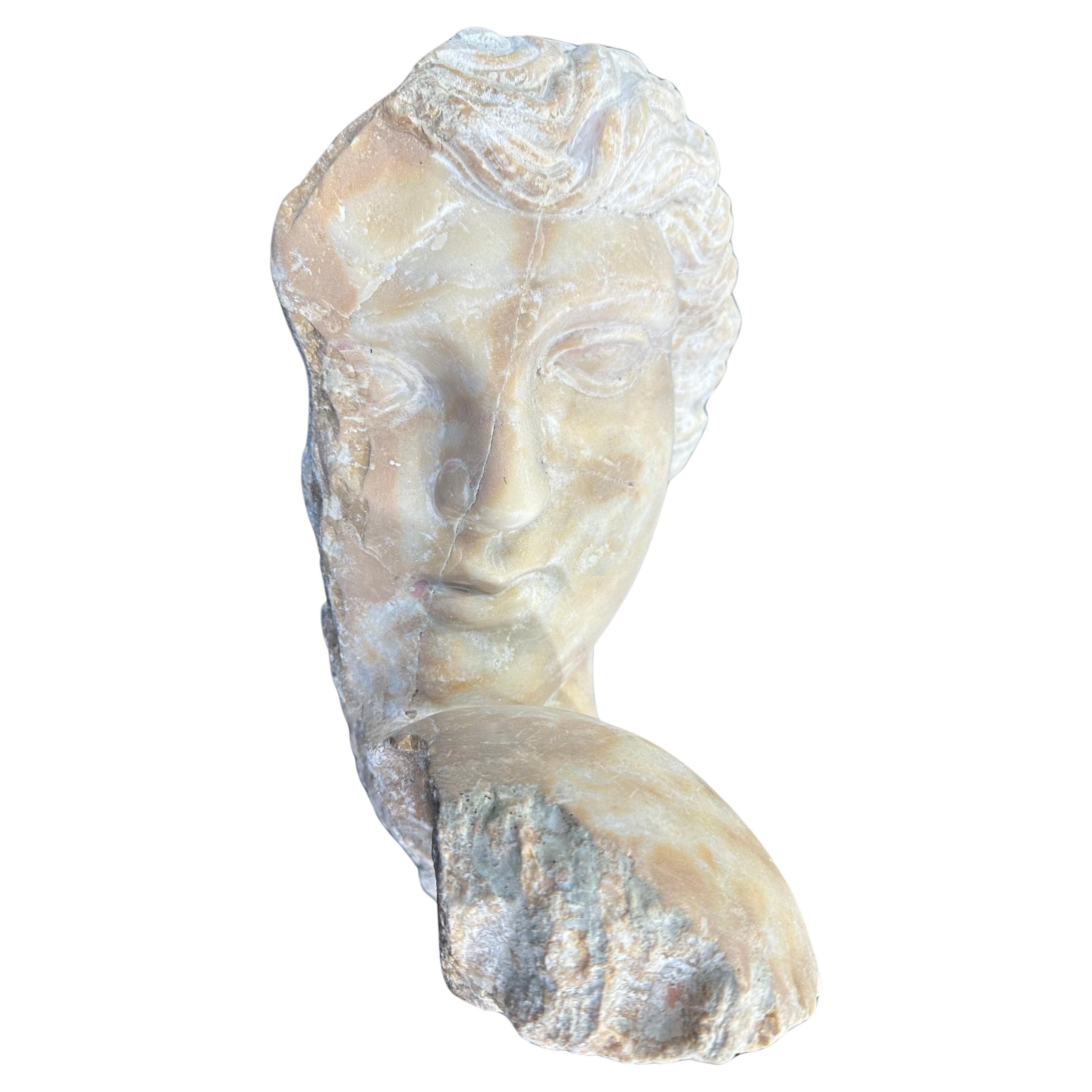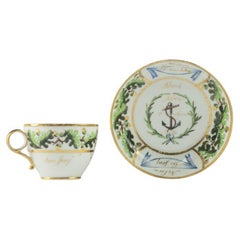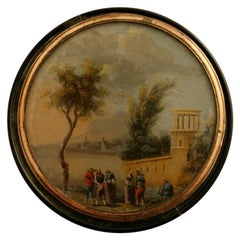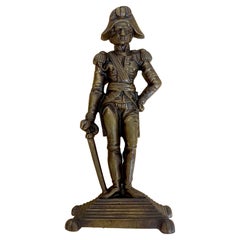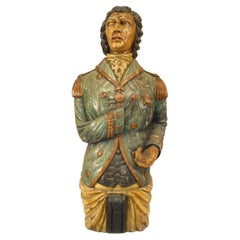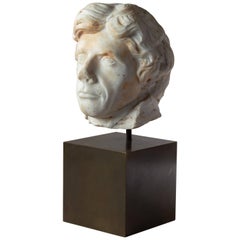
A Marble Head of Admiral Lord Nelson
View Similar Items
Video Loading
Want more images or videos?
Request additional images or videos from the seller
1 of 8
A Marble Head of Admiral Lord Nelson
About the Item
- Dimensions:Height: 18 in (45.72 cm)Width: 0.1 in (2.54 mm)Depth: 0.1 in (2.54 mm)
- Materials and Techniques:
- Place of Origin:
- Period:
- Date of Manufacture:1801-1805
- Condition:Wear consistent with age and use. The nose with some damage.
- Seller Location:Lymington, GB
- Reference Number:1stDibs: LU973011189011
About the Seller
5.0
Recognized Seller
These prestigious sellers are industry leaders and represent the highest echelon for item quality and design.
Established in 1982
1stDibs seller since 2013
109 sales on 1stDibs
Associations
LAPADA - The Association of Arts & Antiques Dealers
More From This SellerView All
- An important porcelain cup and saucer from Admiral Lord Nelson’s ‘Baltic ServiceLocated in Lymington, HampshireBoth pieces are delicately painted in underglaze blues and greens with over glaze hand gilding. Each has a border of oak leaves and gilded acorns, a central fouled anchor within a v...Category
Antique Early 1800s English Ceramics
MaterialsPorcelain
- Lord Mountbatten by Greta Berlin, 1989Located in Lymington, HampshireThis bronze is the maquette for a sculpture of Lord Louis Mountbatten wearing a naval duffel coat, peaked cap and sea boots and holding a pair of binoculars. It is set on a highly polished black stone base and inscribed on the back ‘Mountbatten Study, G. Berlin no. 3 of 3’. English, 1989. We are indebted to Ms Berlin for her kind help in supplying the following information. “I made this piece as a working model, maquette, to show, along with another image, to the clients who were offering the commission for the nine-foot bronze of Lord Mountbatten...Category
Vintage 1980s English Figurative Sculptures
MaterialsBronze
- Hardstone Intaglio Portrait Seal of Admiral Viscount Nelson, circa 1800Located in Lymington, HampshireThis monumental George III gold and hardstone intaglio fob seal comprises a profile portrait of the head and shoulders of Admiral Viscount Nelson, in uniform displaying...Category
Antique Early 1800s English Collectible Jewelry
MaterialsGold
- Charming Bust of a Child’s Head by Edwin Whitney-Smith, Dated, 1910Located in Lymington, HampshireA charming bust of a child’s head by Edwin Whitney-Smith, dated 1910, the girl has her head slightly tilted forwards as she looks out from under a lock of hair, set on a square block signed on the reverse ‘E Whitney-Smith 1910’. This bronze is a reduction of Whitney-Smith’s original marble piece, a photograph of which survives in the V&A (object number AAD/1990/12/63). Another version can be seen in a 1920s photograph of the artist in his studio owned by the National Portrait Gallery (NPG x194201). Neither the identity of the sitter nor title of the work is known. Edwin Whitney-Smith (1880-1952) was one of the pre-eminent sculptors of his day. Born in Bristol in 1880, he became a student of William Harbutt, the headmaster of Bath School of Art, best remembered today for inventing plasticine. Whitney-Smith showed great promise from an early age, opening a studio in St John’s Wood, London, in 1910. He exhibited over 40 pieces at the Royal Academy and despite not achieving Academician status, even with list of illustrious proposers, he became a dear friend of Sir Alfred Munnings, the famous horse painter, and sculpted his portrait. He was, however, elected to the Royal Society of British Sculptors and his works were generally well-received by critics and the general public alike. Aside from the RA, he exhibited in Bristol, at the Paris Salon and the Scottish Academy and his work attracted the attention of such important patrons as the Courtauld family. One of his most famous works, The Waking Child, is in the Ferens Art Gallery in Hull and another, The Irishman, is in the Tate. One version of his bust of Ernest Bevin, the trade unionist, stands in Tooley Street in Bermondsey to this day. An article in The Sphere, published on the 3rd of May 1924, referred to the sculptor as “a well-known sculptor of smiling children” and mentioned his “famous babies’ heads”.Category
Vintage 1910s English Busts
MaterialsBronze
- A Regency extending dining table by Morgan & Sanders, suppliers to Lord NelsonLocated in Lymington, HampshireThis large mahogany imperial action dining table has rounded ends each housing the telescopic action that extends the table to varying lengths, three extra leaves and eight brass clips. It is supported on six turned tapering and reeded legs with brass caps and castors, each end with large brass handle engraved ‘Patent Morgan & Sanders Inventors & Manufacturers, 16 & 17 Catherine Street Strand London‘. English, circa 1815. Height: 28¾ in (73 cm) Length closed: 74in (188 cm) Extended 13ft 4in (406 cm) Width: 59½ in (151 cm) Literature: Nicholas A. Brawer, British Campaign Furniture – Elegance under Canvas, 1740-1914, New York, 2001, pp.192-193, pls.D50-D52 for a very similar dining table. Morgan & Sanders was established in 1800 by Thomas Morgan & Joseph Sanders, both of whom had worked for the cabinetmaker Thomas Butler at 13–14 Catherine Street, London. Initially, they produced campaign furniture, that is, furniture which could be easily knocked down and packed fairly flat, for the use of officers in military service. The Napoleonic War required an ever-expanding British Army and Navy, thus also increasing the demand for all types of campaign furniture, from collapsible beds...Category
Antique 1810s English Regency Dining Room Tables
MaterialsMahogany
- Marble Bust of a Young Lady as Flora by John Adams-ActonLocated in Lymington, HampshireMarble Bust of a Young lady as Flora by John Adams-Acton (English, 1830-1910) Signed and dated: JOHN ADAMS-ACTON FECT ROMA 1864 with inscription ELLEN A. HALL White Marble Provenance: Adams-Acton won the Royal Academy’s Gold Medal for sculpture in 1858 and his prize was to study in Rome under John Gibson, the important British Neoclassical sculptor. This bust of a young lady as Flora, Roman goddess of flowers and the Spring, was probably executed by Adams-Acton in Gibson’s studio in Rome, where he spent a successful period making portraits of Grand Tour patrons. The inscription, ‘Ellen A. Hall’, is probably the name of the sitter, who was most likely a young British tourist in Rome. Adams-Acton exhibited regularly at the Royal Academy from 1854 until 1892, where his sitters included William Gladstone...Category
Antique Mid-19th Century English Busts
MaterialsMarble
You May Also Like
- Admiral Lord Nelson's Tortoiseshell Snuff Box with Certificate of AuthenticityLocated in Jersey, GB- A hugely rare and intimate piece of British history: Admiral Horatio Lord Nelson's snuff box - Admiral Horatio Lord Nelson (1758–1805) is one of the most celebrated figures in British history, best remembered for his heroic efforts during the Napoleonic wars. Nelson's career as a naval officer saw him lead the British fleet to several victories, during which he suffered injuries, including the loss of his right arm and the sight in his right eye. His most famous victory came in October 1805 at the Battle of Trafalgar, in which the Royal Navy decimated the combined fleets of the French and Spanish navies. Prior to the battle, Nelson sent out the famous message "England expects that every man will do his duty". Tragically, he was shot by a French sniper and died on board his ship the HMS Victory mid battle. His body was returned to England where he was granted a state funeral, and numerous monuments were erected in his honor, including Nelson’s Column in Trafalgar Square, London. This tortoiseshell composition snuff box was originally owned by Lord Nelson, and features a miniature watercolor scene of the Amalfi coast on the top. The box was gifted by Nelson to his personal secretary George Unwin, during a dinner party in Sicily in late 1798 or early 1799 which was also attended by Nelson's mistress, Emma, Lady Hamilton. Nelson had first met Hamilton in 1793 and the pair were reunited in 1798 following the Battle of the Nile. Having been severely injured, Nelson recuperated in Naples, during which time he was nursed back to health by Lady Emma and her elderly husband, Sir William Hamilton. It was during this period that Nelson and Hamilton began their famous love affair, which lasted until Nelson's death at the Battle of Trafalgar in 1805. It seems highly possible that Nelson gave this gift to Unwin as a show of generosity, in an attempt to impress his mistress over dinner. The snuff box is offered along with a manuscript letter by Unwin's son, George, which reads in full: "My Father had either lost his own snuff box on going ashore or in some shop in Palermo and upon mentioning the circumstances at Lady Hamilton’s table where Lord Nelson was one of the party his Lordship...Category
Antique Late 18th Century European Rococo Historical Memorabilia
MaterialsTortoise Shell
- English Bronze Doorstop of Horatio Lord Nelson, after E. H. Baily, R.ALocated in West Palm Beach, FLEnglish bronze doorstop of Horatio Lord Nelson, after E. H. Baily, R.A A fine and rare example of a standing the admiral in full military dress, his r...Category
Antique Mid-19th Century English Early Victorian Doors and Gates
MaterialsBronze, Iron
$1,000 Sale Price20% Off - 19th Century English Polychrome Carved Ship Figurehead of Lord NelsonLocated in New York, NY19th century English carved wooden polychrome large ship figurehead of Lord Nelson.Category
Antique 19th Century English Victorian Sculptures
MaterialsWood, Paint
- Antique Victorian cast iron door stop in the form of Lord NelsonLocated in Ipswich, GBAntique Victorian cast iron door stop in the form of Lord Nelson, quality antique Victorian cast iron doorstop with Lord Nelson standing on a stepped base raised on ball feet.Category
Antique 19th Century Victorian Figurative Sculptures
MaterialsIron
- Roman Marble Head of SophoclesLocated in London, GBRoman Marble Head of Sophocles Circa 1st-2nd Century Marble This fine Roman marble head preserves the proper left side of the face of a middle-aged man, with broad nose, soft lips, and bearded chin. The short beard and sideburns have been finely carved with a flat chisel, to render the soft, wavy strands of hair. The cheekbone, undereye, and nasolabial folds have been delicately modelled in the marble by a skilled hand. In a letter from 1975, the former director of Ny Carlsberg Glyptotek, Copenhagen, suggested that the head could depict the Ancient Greek tragedian Sophocles. Few figures in the Classical world stand aside Sophocles (c. 496-406 BC), inarguably the best known of the Athenian tragedians, in terms of the impact his works have had on the history of art and literature. The psychological depth he achieves in the seven of the 123 of his plays that have survived to the present day - most notably the three Theban plays: Antigone, Oedipus the King, and Oedipus at Colonus - not only inspired the Athenians, among whom Sophocles was honoured as a hero long after his death, but in our own time, have provoked landmark works on phychoanalysis and literary criticism, by thinkers like René Girard and, most famously, Sigmund Freud. In its masterful treatment of the marble this fragment sensitively captures the features of one of the most important playwrights of all time. Height on stand: 7.9 inches (20 cm). Provenance: Collection of Danish sculptor Jens Adolf Jerichau...Category
Antique 15th Century and Earlier Classical Roman Busts
MaterialsMarble
- Roman Marble Head of a SatyrLocated in London, GBHead of a Satyr Roman, circa 2nd - 3rd century AD Carved and highly polished marble An extremely fine marble head of a satyr, depicted with ivy wreath, curly hair and pointed goat’...Category
Antique 15th Century and Earlier Busts
MaterialsMarble
